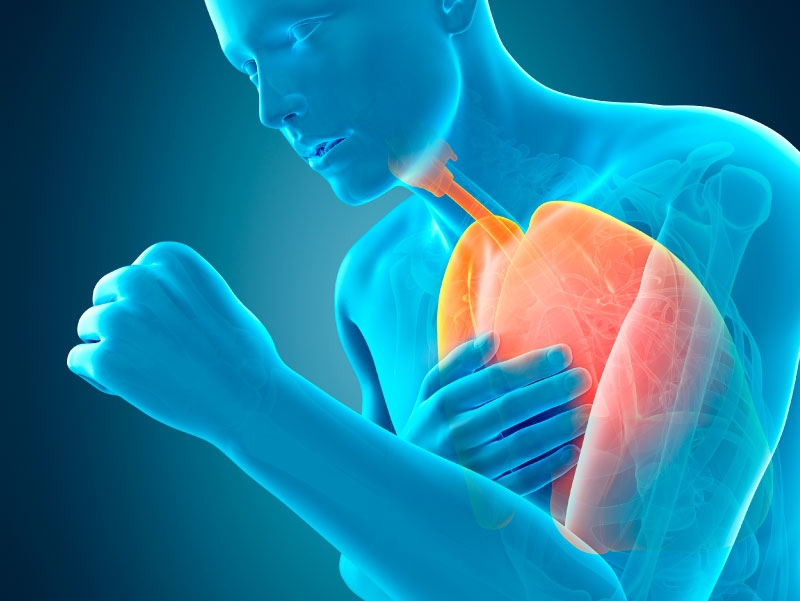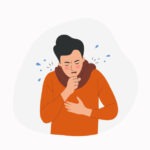Breathing problems are a common and serious health issue that can affect your quality of life and well-being. Breathing problems can make you feel short of breath, wheeze, cough, or chest pain. They can also interfere with your daily activities, such as walking, talking, or sleeping. Breathing problems can be caused by many different conditions, such as lung diseases, heart diseases, allergies, or anxiety. In this blog post, we will answer some of the most frequently asked questions about breathing problems, such as what they are, what causes them, how to diagnose them, how to treat them, and how to prevent them.
What are breathing problems?
Breathing problems are a general term that describes any difficulty or discomfort in breathing. Breathing problems can have different names depending on the cause and severity of the condition. Some of the common names are:
• Dyspnea. This is the medical term for shortness of breath or breathlessness. It means feeling like you can’t get enough air or having trouble breathing deeply or normally.
• Hyperventilation. This is a condition where you breathe faster or deeper than normal. It can cause you to feel dizzy, lightheaded, or tingling in your hands or feet. It can also make your heart beat faster or irregularly.
• Bradypnea. This is a condition where you breathe slower than normal. It can cause you to feel sleepy, confused, or faint. It can also lower your blood pressure and oxygen levels.
• Tachypnea. This is a condition where you breathe faster than normal. It can cause you to feel anxious, restless, or sweaty. It might cause a rise in blood pressure and heart rate.
• Hyperpnea. This is a condition where you breathe deeper than normal. It can cause you to feel tired, thirsty, or dry-mouthed. It can also make your blood more acidic and affect your electrolyte balance.
• Kussmaul breathing. This is a type of deep and rapid breathing that occurs in some cases of diabetic ketoacidosis (a serious complication of diabetes). It can cause you to feel nauseous, vomit, or have abdominal pain. If not treated immediately, it can also result in coma or death.
What causes breathing problems?
Breathing problems can be caused by many different conditions that affect your lungs, heart, airways, blood vessels, or nervous system. Some of the common causes are:
• Lung conditions. These are diseases that affect the function or structure of your lungs and make it harder for them to exchange oxygen and carbon dioxide with your blood. Some examples are asthma, chronic obstructive pulmonary disease (COPD), pneumonia, pulmonary embolism, pulmonary hypertension, and lung cancer.
• Heart conditions. These are diseases that affect the function or structure of your heart and make it harder for it to pump blood to your lungs and body. Some examples are heart failure, heart attack, cardiac tamponade, and congenital heart defects.
• Airway conditions. These are diseases that affect the tubes that carry air from your nose and mouth to your lungs and make it harder for air to flow through them. Some examples are bronchitis, croup, epiglottitis, and vocal cord dysfunction.
• Blood vessel conditions. These are diseases that affect the vessels that carry blood from your heart to your lungs and body and make it harder for blood to flow through them. Some examples are anemia, carbon monoxide poisoning, and sickle cell disease.
• Nervous system conditions. These are diseases that affect the nerves that control your breathing muscles and make it harder for them to contract and relax normally. Some examples are Guillain-Barré syndrome, myasthenia gravis, and spinal cord injury.
• Environmental factors. These are external factors that can irritate your lungs or airways and make it harder for you to breathe normally. Some examples are allergies, smoking, air pollution, extreme temperatures, high altitude, and obesity.
How are breathing problems diagnosed?
Breathing problems can be diagnosed by your doctor based on your medical history, physical examination, and various tests and procedures. The following are some examples of frequent testing and procedures:
• Pulse oximetry. This is a simple test that measures the amount of oxygen in your blood using a device that clips onto your finger or earlobe.
• Spirometry. This is a test that measures how much air you can breathe in and out and how fast you can do it using a device called a spirometer.
• Peak flow meter. This is a device that measures how fast you can blow air out of your lungs using a mouthpiece attached to a gauge.
• Chest X-ray. This is an imaging test that uses X-rays to create pictures of your chest organs and structures.
• Chest CT scan. This is an imaging test that uses X-rays and a computer to create detailed pictures of your chest organs and structures.
• Blood tests. These are tests that analyze samples of your blood for signs of infection, inflammation, anemia, or other conditions that can affect your breathing.
• Sputum culture. This is a test that analyzes samples of mucus coughed up from your lungs for signs of infection or inflammation.
• Bronchoscopy. This is a procedure that uses a thin flexible tube with a light and camera to examine your airways and lungs for signs of disease or blockage.
• Echocardiogram. This is an imaging test that uses sound waves to create pictures of your heart and its valves and chambers.
How are breathing problems treated?
The treatment for breathing problems depends on the cause and severity of the condition. The main goal of treatment is to improve your breathing and oxygen levels and prevent or treat any complications. Some of the common ways to treat breathing problems are:
• Medications.
These are drugs that can help relieve your symptoms or treat the underlying cause of your breathing problem. Some examples are bronchodilators, steroids, antibiotics, antihistamines, and anticoagulants.
• Oxygen therapy.
This is a treatment that provides extra oxygen to your lungs through a mask or nasal cannula attached to an oxygen tank or machine. This can help improve your oxygen levels and ease your breathing.
• Nebulizer therapy.
This is a treatment that delivers medication in the form of a mist to your lungs through a mouthpiece or mask attached to a machine called a nebulizer. This can help open up your airways and reduce inflammation or infection in your lungs or bronchi (the tubes that carry air from the trachea to the lungs).
• Inhaler therapy.
This is a treatment that delivers medication in the form of a spray to your lungs through a device called an inhaler that you hold in front of your mouth or nose and press down while inhaling deeply at the same time. This can help open up your airways and reduce inflammation or infection in your lungs or bronchi. Inhalers are classified into two types: metered-dose inhalers (MDIs) and dry powder inhalers (DPIs). MDIs use propellants to push out medication, while DPIs use breath power to draw in medication.
• BiPAP/CPAP therapy.
These are treatments that use machines to deliver pressurized air to your lungs through a mask or nasal prongs. This can help keep your airways open and prevent them from collapsing during sleep. BiPAP stands for bilevel positive airway pressure, which means it delivers two different levels of pressure: one when you inhale, and one when you exhale. CPAP stands for continuous positive airway pressure, which means it delivers one constant level of pressure throughout. These therapies are often used for people with sleep apnea, which is a condition where you stop breathing briefly during sleep.
• Surgery.
This is an option for some cases of severe or life-threatening breathing problems that do not respond to other treatments. Surgery may involve removing part or all of the lung, repairing the heart valve, inserting stent into a blocked artery, removing tumor, transplanting an organ, or implanting a device.
How can I prevent breathing problems?
The best way to prevent breathing problems is to keep your lungs healthy and avoid factors that can irritate them or cause damage. Some tips to prevent breathing problems are:
• Pursed-lip breathing: This technique involves breathing in through your nose and exhaling slowly through pursed lips, like blowing a candle. It can help you control your breathing rate and improve oxygen exchange.
• Sitting forward: This position can help relax your body and open up your airways. You can sit on a chair with your feet flat on the floor and lean your chest slightly forward. You can also rest your elbows on your knees or a table.
• Quit smoking: Smoking is one of the main causes of lung damage and disease. It can also worsen existing breathing problems. Quitting smoking can improve your lung function and reduce your risk of lung cancer, COPD, asthma.
• Standing with supported back: This position can also help ease your breathing. You can stand near a wall with your feet shoulder-width apart and lean your hips on the wall. You can also rest your hands on your thighs or the wall.
• Sleeping in a relaxed position: If you have trouble breathing at night, you may want to try sleeping on your side with a pillow between your legs and your head elevated with another pillow. This can help reduce pressure on your chest and make breathing easier.
• Avoiding triggers: Some common triggers that can worsen breathing problems include allergens, smoke, pollution, cold air, exercise, stress, and certain foods. You may want to avoid or limit your exposure to these triggers as much as possible.
• Using a humidifier or steam: Dry air can irritate your airways and make breathing more difficult. You may want to use a humidifier or inhale steam from a bowl of hot water or a shower to moisten the air and loosen mucus in your lungs.
• Drinking fluids: Staying hydrated can help thin the mucus in your airways and make it easier to cough it up. You may want to drink water, juice, tea, or soup throughout the day.
• Taking medications: Depending on the cause of your breathing problems, you may benefit from taking certain medications that can help open up your airways, reduce inflammation, or treat infections. Some examples are bronchodilators, corticosteroids, antihistamines, antibiotics, or antivirals. However, you should always consult your doctor before taking any medication and follow their instructions carefully.
• Using oxygen therapy: In some cases, you may need extra oxygen to help you breathe better. Your doctor may prescribe oxygen therapy for you if you have a condition that affects the oxygen levels in your blood, such as COPD, emphysema, or heart failure. You may use an oxygen concentrator or a portable oxygen tank to deliver oxygen through a tube under your nose or a mask over your mouth and nose
• Doing breathing exercises: Breathing exercises can help strengthen your respiratory muscles, improve your lung function, and reduce stress. You may want to practice some breathing exercises regularly, such as diaphragmatic breathing, deep breathing, or alternate nostril breathing.



